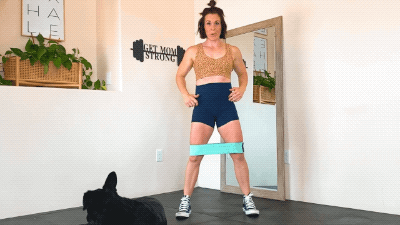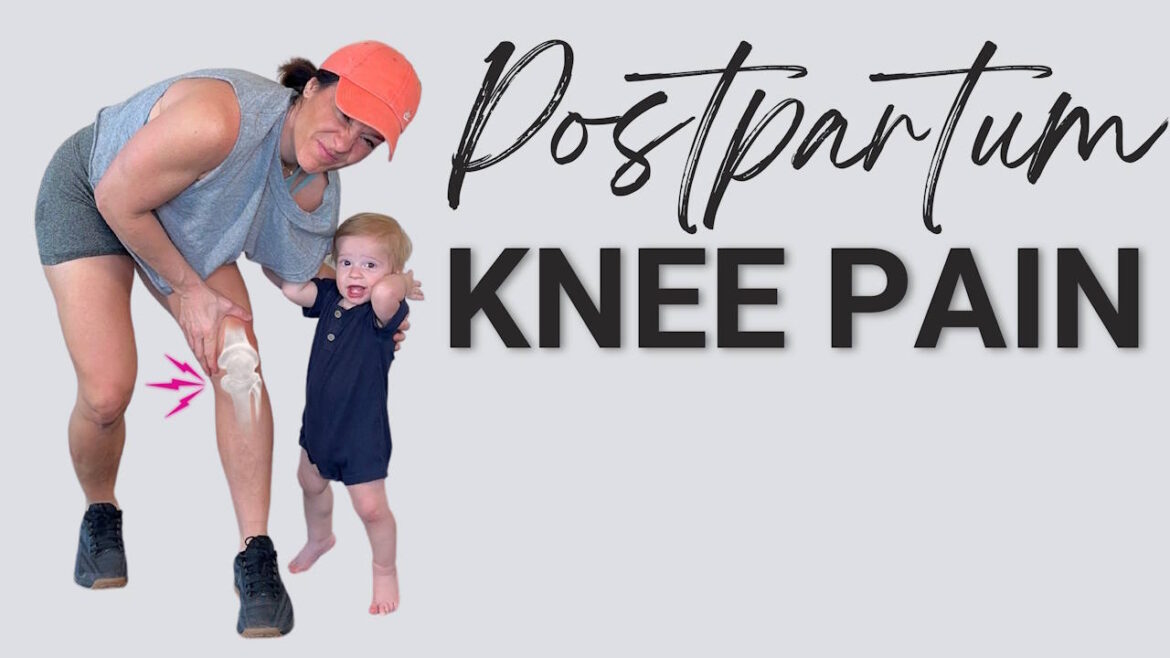Congratulations, the new baby is here! Growing and birthing a baby is tremendous work. And the various aches and pains of pregnancy sometimes last into the postpartum stage. Let’s dive into postpartum knee pain in particular.
Why do my Knees Hurt After Pregnancy?
The knees are particularly susceptible to postpartum pain. Carrying extra weight during pregnancy and the hormonal shifts that occur to prepare the body for labor are common contributors to knee pain postpartum.
Can Relaxin Cause Knee Pain?
Relaxin, a hormone released during pregnancy, loosens pelvic joints in preparation for labor. It also loosens up the tendons and ligaments in the knees. Research shows altered laxity can contribute to joint dysfunction after delivery.
It takes time – weeks to several months – for hormones to rebalance, especially if you’re breastfeeding. As a result, you may be more prone to pain or injury during this time.
What Can be Done About Postpartum Knee Pain?
Resting your knees to allow them to recover is necessary. (Easier said than done with a new baby or other kids to care for!) It’s equally important to move – gently and with good form – as you walk and resume exercising.
One of the best ways to improve knee pain is to strengthen your muscles, especially your quads. Strong muscles provide better support for your joints!
Modifying Exercises
You can modify exercises to avoid further aggravating your knee joints. You’ll want to “track” your knees, keeping them in line or slightly turned out. Whether doing exercises like a squat or moving in everyday life, you don’t want your knees to cave in.
Try it: Think of lengthening your glute muscles as you squat down. Try squatting “down and back” to a bench or chair. Many people tend to sink straight down, which is significantly harder on the knees.

Try it: Place a small exercise band loop just above your knees. The band provides feedback as you squat, and again, helps to track your knees as you go down.

Knee Pain after C-Section
If you’ve had a c-section, your body is going to require a lot of time to rest, recover, and heal. While you’re recovering, your body has a limited range of motion. The muscles, ligaments, and joints that connect the hips down to the knees (called a kinetic chain) may ache and feel tight.
Try it: Incorporate c-section scar massage into your routine once the wound is FULLY healed–at least six weeks postpartum. This will help restore elasticity to the tissue, reduce pain and sensitivity, and prevent scar tissue from attaching to surrounding areas.
If you experience pain, redness, swelling, or warmth in your leg(s) after a C-section delivery you should seek medical attention. These are potential signs of a blood clot or deep vein thrombosis (DVT).
How Long Does Postpartum Joint Pain Last?
Remember, it takes time to heal, and everyone’s recovery looks different. If your knee pain lasts longer than several weeks or impedes regular, everyday life, please talk to a medical professional. This could be a sign of postpartum arthritis or postpartum bursitis.
Along with the correct diagnosis, physical therapy, lifestyle changes, anti-inflammatory medication, or other treatment may be necessary.
Roll Away the Knee Pain
A foam roller or small massage ball can help relieve knee pain after pregnancy. Foam rolling helps to release fascial tension, allowing muscles to move with greater ease. This improves mobility and form, ultimately alleviating pain.
For more on foam rolling, myofascial release, and stretching, check out SLAM Stretch program on the Get Mom Strong app.
